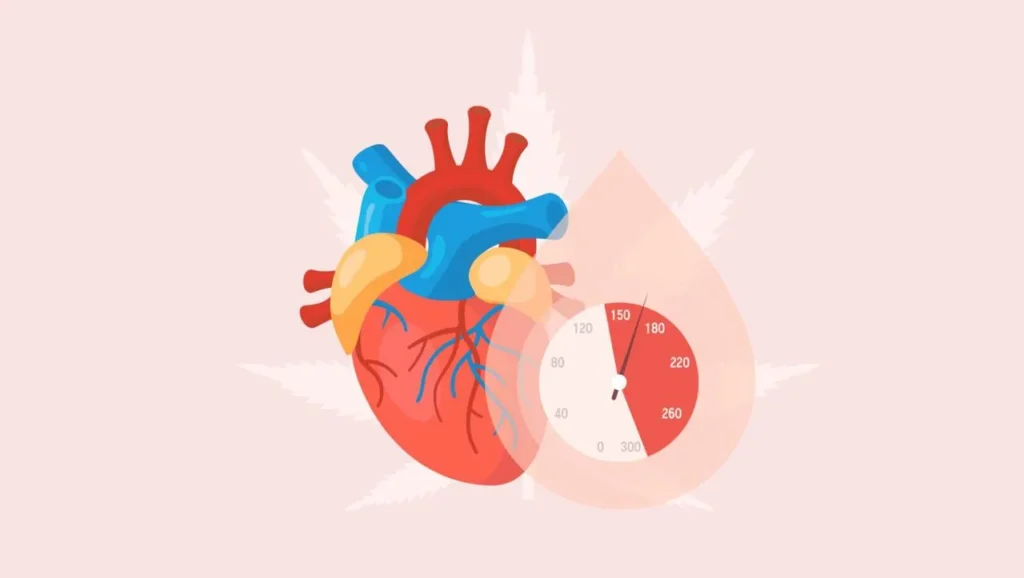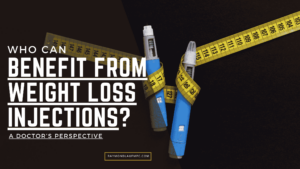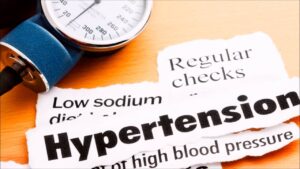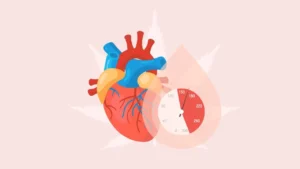Understanding Hypertension and Its Treatment
Hypertension represents a significant global health challenge that affects approximately 1.28 billion adults worldwide. Proper understanding of this condition and its treatment options is essential for effective management and reduction of cardiovascular risks.
Defining Hypertension and Its Impact on Health
Hypertension, or high blood pressure, is defined as consistently elevated pressure in the arteries. Current hypertension guidelines classify blood pressure as elevated when systolic readings are 120-129 mmHg with diastolic below 80 mmHg, and as hypertension when readings are 130/80 mmHg or higher.
Uncontrolled hypertension significantly increases the risk of serious health complications. These include heart attack, stroke, heart failure, kidney disease, and cognitive decline.
The impact of hypertension extends beyond physical health. It contributes to premature mortality and reduced quality of life for millions globally. Early detection and proper management are critical to prevent organ damage and maintain cardiovascular health.
Primary Hypertension vs. Secondary Hypertension
Primary (essential) hypertension accounts for approximately 90-95% of all hypertension cases. This form develops gradually over years without an identifiable cause, influenced by genetics, lifestyle factors, and aging.
Secondary hypertension, comprising the remaining 5-10% of cases, results from an underlying condition. Common causes include kidney disease, hormonal disorders, certain medications, and sleep apnea. This type often appears suddenly and causes higher blood pressure than primary hypertension.
Distinguishing between these types is crucial for treatment planning. Secondary hypertension may be curable if the underlying cause is addressed, while primary hypertension typically requires lifelong management through lifestyle modifications and medication.
Overview of Hypertension Treatment Strategies
Treatment strategies for arterial hypertension follow a stepped-care approach. Initial interventions focus on lifestyle modifications including reduced sodium intake, regular physical activity, weight management, limited alcohol consumption, and smoking cessation.
When lifestyle changes prove insufficient, clinicians initiate treatment with antihypertensive drugs. First-line medications include thiazide diuretics, calcium channel blockers, ACE inhibitors, and angiotensin receptor blockers. Treatment plans are individualized based on patient characteristics, comorbidities, and potential side effects.
The management of hypertension often requires regular monitoring and adjustment of treatment regimens. Target blood pressure goals vary by patient population, with recent guidelines from the European Society of Cardiology recommending targets below 140/90 mmHg for most patients, with lower targets for specific groups.
Adherence to prescribed medications remains essential for successful blood pressure control. Patient education and regular follow-up appointments help ensure treatment effectiveness and early identification of potential complications.
Indications for Combination Therapy in Hypertension
Several clinical situations necessitate the use of combination therapy for effective blood pressure management. Combination approaches offer synergistic effects by targeting different blood pressure regulation mechanisms simultaneously.
When Monotherapy Is Not Enough
Monotherapy fails to achieve target blood pressure goals in approximately 50-70% of hypertensive patients. When a patient’s blood pressure remains ≥20/10 mmHg above target despite maximum tolerated doses of a single agent, combination therapy becomes necessary.
Initial combination therapy is now recommended for patients with stage 2 hypertension (BP ≥140/90 mmHg). These patients typically require multiple mechanisms of action to achieve adequate control.
Guidelines from major cardiology associations suggest that patients with baseline systolic BP >160 mmHg or diastolic BP >100 mmHg will likely need at least two medications. The likelihood of achieving target BP with monotherapy decreases as baseline BP or cardiovascular risk increases.
Patients showing <10 mmHg reduction in systolic BP after 4-6 weeks on maximum dose monotherapy should be considered for combination treatment.
Resistant Hypertension and Combination Therapy
Resistant hypertension, defined as blood pressure remaining above goal despite concurrent use of three antihypertensive agents of different classes (including a diuretic), necessitates strategic combination therapy. Approximately 10-15% of hypertensive patients develop resistant hypertension.
Combination therapy for resistant hypertension typically includes:
- An ACE inhibitor or ARB
- A calcium channel blocker
- A thiazide diuretic
- A fourth agent (typically aldosterone antagonist)
Patients with secondary causes of hypertension, including obstructive sleep apnea, primary aldosteronism, and renal artery stenosis, often require specific combination regimens. Drug adherence assessment is crucial before diagnosing true resistant hypertension, as non-adherence accounts for many apparent treatment failures.
Multiple drug combinations address the various physiological mechanisms contributing to blood pressure elevation in difficult-to-treat patients.
Tailoring Treatment to Patient Needs
Comorbidities significantly influence the selection of appropriate combination therapies. Patients with diabetes benefit from combinations including ACE inhibitors or ARBs, while those with coronary artery disease may need beta-blockers with ACE inhibitors.
Recommended combinations for specific patient populations:
- Elderly patients: Calcium channel blocker + thiazide diuretic (reduced orthostatic hypotension risk)
- Chronic kidney disease: ACE inhibitor/ARB + calcium channel blocker
- Heart failure: ACE inhibitor/ARB + beta-blocker + diuretic
Single-pill combinations improve adherence by 21-30% compared to equivalent free-drug combinations. This adherence benefit often justifies their use despite potentially higher costs.
Frequent monitoring during combination therapy initiation helps identify adverse effects early. Treatment should be adjusted based on home BP monitoring and 24-hour ambulatory readings rather than isolated office measurements.
Combination Therapy Practices and Guidelines
Effective management of hypertension often requires strategic use of multiple medications to achieve target blood pressure goals. Modern treatment approaches have evolved to include standardized combination therapies with clear guidelines for implementation.
Fixed-Dose Combinations and Their Benefits
Fixed-dose combinations (FDCs) combine two or more antihypertensive agents in a single pill, significantly improving medication adherence. Studies show adherence rates increase by 21-26% with FDCs compared to free-drug combinations.
FDCs offer several advantages beyond convenience:
- Simplified regimen: Reduces pill burden and complexity
- Enhanced efficacy: Complementary mechanisms of action
- Reduced side effects: Lower doses of individual components
- Cost-effectiveness: Often less expensive than separate medications
Many current FDCs pair agents with complementary actions, such as ACE inhibitors with calcium channel blockers or diuretics with angiotensin receptor blockers. The synergistic effect often produces greater blood pressure reduction than either agent alone.
The Role of Hypertension Guidelines in Treatment
Major hypertension guidelines provide evidence-based recommendations for combination therapy initiation. The American College of Cardiology/American Heart Association guidelines suggest starting with two first-line agents for stage 2 hypertension (BP ≥140/90 mmHg).
European Society of Cardiology guidelines similarly recommend initial combination therapy for most patients, particularly when BP exceeds target by >20/10 mmHg. These recommendations stem from recognition that monotherapy achieves target BP in only about 30% of patients.
Guidelines typically suggest combinations based on:
- Patient demographics and comorbidities
- Compelling indications (diabetes, CKD, heart failure)
- Potential for adverse effects
- Cost considerations
Regular guideline updates incorporate emerging clinical evidence, ensuring treatment approaches reflect current best practices.
Optimizing Blood Pressure Control
Achieving optimal blood pressure control often requires personalized approaches beyond standard combination therapy. Monitoring BP response is essential, with home BP monitoring providing valuable data between office visits.
Clinicians should evaluate treatment efficacy within 2-4 weeks of initiation or adjustment. Inadequate response might necessitate:
- Increasing medication doses
- Adding a third agent from a different class
- Evaluating for secondary causes of hypertension
- Addressing lifestyle factors affecting BP control
Triple therapy becomes necessary for approximately 25-30% of patients with resistant hypertension. Common triple combinations include an ACE inhibitor/ARB, calcium channel blocker, and thiazide diuretic.
Medication timing also affects control. Evening dosing of at least one antihypertensive may improve nighttime BP patterns and reduce cardiovascular risk.
Frequently Asked Questions
Combination therapy for hypertension involves strategic use of multiple medications to achieve blood pressure targets. Understanding when and how to implement combination approaches is crucial for effective management of high blood pressure.
What factors determine the initiation of combination therapy in treating hypertension?
Initial blood pressure readings exceeding 20/10 mmHg above target, presence of target organ damage, or high cardiovascular risk profiles typically necessitate starting with combination therapy.
How do healthcare providers decide between monotherapy and combination therapy for a hypertensive patient?
Providers assess baseline blood pressure, cardiovascular risk factors, comorbidities, medication adherence history, and potential for adverse effects when making this clinical decision.
What are the potential benefits of using combination therapy over monotherapy in hypertension management?
Combination therapy often achieves faster blood pressure control, allows for lower doses of individual medications reducing side effects, and provides complementary mechanisms that address multiple pathways of blood pressure regulation.
Which antihypertensive drug classes are commonly used in combination for treating high blood pressure?
ACE inhibitors or ARBs paired with calcium channel blockers or thiazide diuretics represent first-line combinations, while beta-blockers with diuretics are frequently used as second-line options.
Can you list some common medication combinations that should be avoided in hypertension treatment?
Dual renin-angiotensin system blockade (combining ACE inhibitors with ARBs) should be avoided due to increased risk of hyperkalemia and acute kidney injury without significant additional blood pressure benefit.
What recent evidence supports the use of triple single-pill combination therapy in hypertension?
The TRIUMPH study demonstrated that triple combination therapy in a single pill significantly improved blood pressure control rates and treatment adherence compared to usual care for patients with uncontrolled hypertension.







